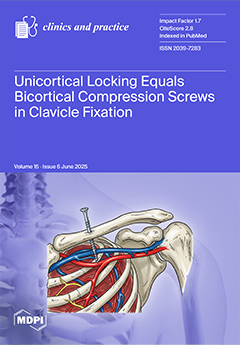Background/Objective: Urinary tract infections (UTIs) are a significant public health concern worldwide, yet longitudinal data from Portuguese hospital settings remain limited. This study aimed to characterize epidemiological trends, microbial etiology, antimicrobial resistance patterns, and associated risk factors of UTIs over a five-year period
[...] Read more.
Background/Objective: Urinary tract infections (UTIs) are a significant public health concern worldwide, yet longitudinal data from Portuguese hospital settings remain limited. This study aimed to characterize epidemiological trends, microbial etiology, antimicrobial resistance patterns, and associated risk factors of UTIs over a five-year period (2018–2022) in a central Portuguese hospital.
Methods: In this retrospective observational study, 23,682 positive urine cultures were analyzed from specimens collected between January 2018 and December 2022. Data were extracted from the laboratory information system and included patient demographics, clinical service of origin, isolated microorganisms, resistance profiles, and annual antibiotic consumption (Defined Daily Dose (DDD) per 1000 patient-days). UTI prevalence was calculated as the proportion of positive cultures among all urine samples processed annually.
Results: The positivity rate increased from 18.7% in 2018 to 22.7% in 2022, with a peak in 2019. Women represented around 70% of cases throughout the study period. Most infections originated from inpatient wards, followed by emergency services.
Escherichia coli remained the leading pathogen (≈62%), followed by
Klebsiella pneumoniae (≈14%) and
Enterococcus faecalis (≈8%). Risk factors included catheterization (37.2%), prior UTI history (22.1%), and diabetes mellitus (18.5%). Longer hospital stays (>7 days) were associated with increased positivity. For
E. coli, resistance ranged from 2% (amikacin) to 41% (ampicillin), with increasing resistance to ertapenem and fosfomycin and decreasing resistance to several key antibiotics.
K. pneumoniae showed 4–36% resistance across antimicrobials, with notable increases for fosfomycin, meropenem, and cefuroxime axetil. Antibiotic usage trends reflected these patterns, with declining use of amikacin and rising use of cefuroxime axetil and meropenem.
Conclusions: Over the five-year period, both UTI prevalence and resistance to critical antimicrobials increased, reinforcing the need to update empirical treatment guidelines. Identified risk factors may inform targeted prevention strategies. Ongoing surveillance and antimicrobial stewardship are crucial to mitigate the rising burden of UTIs and resistance
Full article






